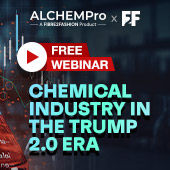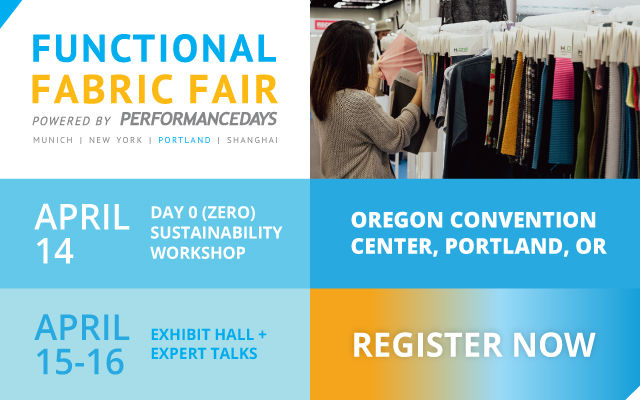Currently the world over, safety jackets being used aremainly reflective type of jackets that have a very high visibility when lightfalls on them. These are used by professional who are required to work inconditions of low visibility. These jackets however fail to deliver theirfunctionality when there is no light incident on them. Thus glow in the darkjackets, which are essentially jackets with a coating of photo luminescentpigment, assume great importance.
| As new pigments are developed for the self-illuminated jackets, it will improve the functionality of the product and make it a more broad-spectrum product and one for the future. |
Safety Jackets
Most of the safety jackets have a reflective strip thatreflects light in conditions of low visibility. These jackets are however of nouse in habitats where there is no incident light, for example a mine or a darkstreet or railway track, as shown in Fig 1.
Fig1:Reflective type safety jackets
To overcome this shortcoming of the reflective type ofjackets, we have developed a photo-luminescent fabric. Strips of this fabriccan be cut and stitched on jackets along with the reflective strips so thatthese become visible during night under very poor visibility conditions in theabsence of an incident light as shown in Fig 2.
Fig2:Self illuminated safety jackets
Fluorescence, Phosphorescence and Glow in the Dark pigments:
When an electron absorbs light energy, it is usually excited to a higher energy level in the first excited state S1 as shown in Fig 3, before rapidly relaxing to the lowest energy level. This event is termed vibration relaxation or internal conversion and occurs in about a picoseconds or less. The decay straight from the S1 state to the So state after the internal conversion is termed as fluorescence. Phosphorescence decay is similar to fluorescence, except that the electron undergoes a spin conversion into a triplet state T1 instead of the lowest singlet excited state So' a process known as intersystem crossing. The stability of the first triplet excited state T1 is what determines whether a material is fluorescent or phosphorescent. Fluorescence occurs if this excited state is relatively unstable and phosphorescence occurs if it is relatively stable. This however is an inherent property of the material and cannot be changed. Thus phosphorescence is a much slower process than fluorescence.
Fig 3: Jablonski diagram to differentiate between fluorescence and phosphorescence
Glow in the Dark pigments usually contain two types of components; one being the fluorescent dye and the other the phosphorescent compound. What happens is that the phosphorescent material absorbs light and emits it slowly as a pale blue light. Then the pale blue light is absorbed by the fluorescent dye and emitted as a green or red light depending on the dye used. The most commonly used phosphorescent material is zinc sulfide mixed with copper. The green fluorescent dye is mostly sodium fluorescein and the red fluorescent dye is a Rhodamine. Since fluorescence is a much faster process than phosphorescence, the phosphorescent material forms the source and the fluorescence material takes up the role of the device for energy consumption (Fig 4).
Fig 4: Chemical structure of fluorescent dyes present in glow in the dark pigments
Moreover, the level of phosphorescence displayed by these pigments depends on the thickness of the pigment layer as shown in Fig 5. It is difficult to deposit a pigment layer of 0.2 mm thickness required for >90 phosphorescence on a fabric by standard textile finishing techniques such as padding or printing. Also the finish obtained should be durable particularly against rubbing. As with any new product, there are no standardised testing methods, thus developing these methods also becomes a challenge. Another challenge is to find an appropriate laminating system for the strips before they are used on the fabric, without lowering the visibility of the strips.
Fig 5: Level of phosphorescence vs thickness of phosphorescent pigment layer
Experimental Materials Used:
Phosphorescent Pigment L-YG2-F was used for all production
and was sourced from B N Mehra & Co, New Delhi. It has the following
properties:
- Afterglow Period: up to 2 hours
- Charging time: 4-5 min
- Body Colour: Yellow
- Max Brightness for Yellow Green Emission
- Initial luminescence: 300 mcd/m2
- Particle Size: 55-65 microns
- Charged by artificial or natural light (200-450 nm)
- Stable up to 850C.
Synthetic thickener, Printofix thickener CN (Clariant), Printofix binder 2000 (Clariant) and PVAC emulsion (Fevicolj Vamicol) was used for all experiments.
Fluorescent dyed breathable polyester jackets were sourced from Krishna Enterprises, Mumbai and were used for fabrication of final products. BOPP self adhesive tape was of RS Enterprises, New Delhi and both laminated and non-laminated tapes were bought from Sadar Bazaar, New Delhi and were used along with photo luminescent strips on the jackets.
For jacket with laminated strips, 100% cotton-scoured and bleached fabrics were used, while for jacket with strips sewed on directly 100% polyester and nylon fabrics.
Fabric Coating:
Coating of the fabric with varying pigment concentration and analyzing the K/S value results from colour measurement test using spectrophotometer, following coating paste recipe was finalized and used.
- Recipe:
▪ Pigment: 20%
▪ Binder: 20%
▪ Vamicol : 10%
▪ Thickener: 2%
▪ Water: 48%.
- This is followed by high speed stirring and coating a uniform layer of print paste using lint plate (Doctor's Blade).
- Dried for 6 minutes at 120C.
Above recipe was tried for cotton as well as PET samples. Both of them gave satisfactory results. Glow of these samples was also appreciable and met the requirements of the proposed product. Hence, using the above recipe a continuous length of samples was prepared, as required for the production of the final product.
Evaluation Methods: Intensity Measurement:
Intensity of the light emitted from the fabric was measured by lliuminometer. The intensity measured is expressed as 'lux'.
Illuminometer:
It contains a photon detector, which is connected to selenium chip. The specimen to be tested is kept on a photon detector. The photons emitted by the specimen are absorbed by the detector. A current starts flowing due to the absorption of photons since selenium is a semiconductor. The instrument is calibrated in such a way that this current value is converted to 'lux' value, which is shown on the electronic display.
Testing Methodology:
First the sample is kept in perfectly dark room conditions for two hours to get the sample completely discharged. Then the sample is charged for five minutes by exposing it to 40 watts fluorescent light. After charging, the luminance value is measured in 'lux' with the help of illuminometer. The 'lux' value is converted to mcd/m2 as described below.
Luminance (mcd/m2) = [{illuminance (lux) * reflectance}/ p]*1000
Reflectance value is calculated from Munsell value, which is 8 as obtained from spectrophotometer (HVC = 2.9Y / 8/2), using the formula:
Luminance (mcd/m2)
= (0.4/3.1:4)*1000*lux
Standard Data :
According to DlN67510 standard, the various intensity of light which is required for various types of jobs performed are given in Table 1.
Results: Plain cotton fabric:
The results of the luminance measurement of the coated fabric are plotted in Fig 6. It may be observed from the figure that it takes around six to seven minutes for the illuminated fabric to come down to 3 mcd/m2 from the initial high value pf 200 mcd/m2 while it takes around 35 min to reach 0.3 mcd/m2.
Fig 6: Intensity Vs Time graph for self illuminated plain cotton fabric
Cotton fabric laminated with plastic strip:
The coated fabric was encased in a transparent plastic sheet and its luminance was measured. In this case also, the result showed that there was not much change in the intensity of light. These results indicated that lamination of the coated fabric with transparent sheet does not change its luminance characteristics.
Cotton fabric coated with paste-containing Vamicol:
This testing was done to test whether Vamicol (Polyvinyl acetate paste) has any effect on light intensity.
Fig 7: K/S value vs Concentration of pigment in print paste
And after the test results it was found that there was no difference between the cotton fabric printed without Vamicol and with Vamicol.
Optimization of concentration of pigment:
Samples with different pigment concentration were prepared and their KjS values were calculated for different concentrations. Plot of KjS vs Concentration as shown in Fig 7 indicated that initially there is increase in color strength and then, after a concentration of 20%, it levels off. The concentration at which flat region occurs was chosen as the final concentration of pigment in print paste.
Wash fastness of the coated fabrics:
The wash fastness test of the coated samples was conducted as per the ISO-III specifications. It involves the determination of colorfastness of the textiles material to the action of soap solution under agitation at 60C.
Samples were cut to a size of 4 cm x 10 cm and were sandwiched between equal size sample of the same fabric on one side and wool fabric on the other. This prepared composite sample was washed in 5 gpl soap solution for 30 min in a laundrometer at 60C with a MLR of 1:50, rinsed and dried. The colour fastness was assessed in terms of the glow time and wash fastness was measured with the grey scale. For our sample it came out to be 4 on scale of 5, which is satisfactory.
The L * ,a* ,b* ,C* and hue angle of the washed and unwashed sample in Table 2 indicate a slight change in hue on washing.
Conclusion:
Thus a product was created which involved the optimum use of pigment concentration, and coating layer thickness. Based on the requirements of the end-product, one can engineer the product by using a different pigment having longer glow periods (e.g. Luminova) in the same vehicle, or increase or decrease the coating thickness layer for increased glow duration.
These pigments are still in the development stages, and therefore as new pigments are developed, the glow time, and the luminosity values will keep on increasing, thus improving the functionality of the product, and making it a broader spectrum product and one for the future.
References:
1) Development of printed cotton apparel using phosphorescent pigment; Savita Sachdeva,
2) http://www.madsci.org/posts/archives/may98/895290029.Ch.r.html
3) ISO III Wash Fastness Test
4) DIN 67510 Standard for Luminosity Testing
5) EN-471 Standard for Reflective Safety Clothing.
6) Phosphorescent Pigment GSS literature.
About the Author:
Prof. Dr. M. L. Gulrajani is associated with the Dept of Textile Technology, IIT, New Delhi. His main research activities involve textile chemical processing, dyeing and printing. Prof. Gulrajani has undertaken about 50 consultancy projects from various textile sectors.
Originally published in Asian Dyer April 2008
To read more articles on Textile, Industry, Technical Textile, Dyes & Chemicals, Machinery, Fashion, Apparel, Technology, Retail, Leather, Footwear & Jewellery, Software and General please visit https://articles.fibre2fashion.com
To promote your company, product and services via promotional article, follow
this link: https://www.fibre2fashion.com/services/article-writing-service/content-promotion-services.asp
.



20250327153830.png)





Comments